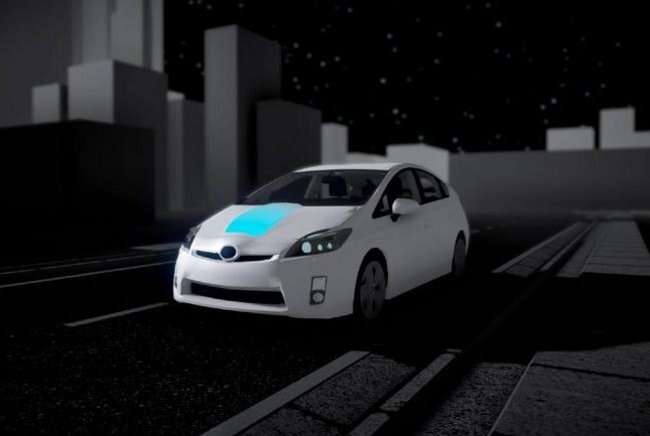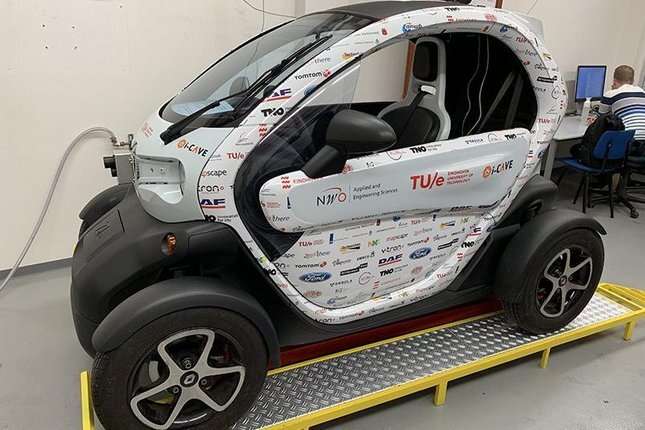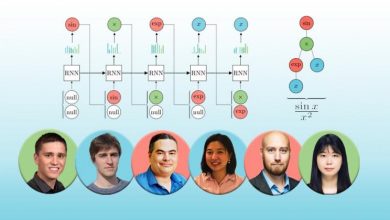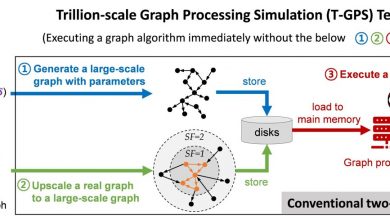i-Cave: The future of moving forward

Can you develop a vehicle that can drive both cooperatively, that is, in a column with others, and autonomously? This is the central question of the research program i-Cave, which started in 2015. Now, five years later, the answer is affirmative. This does not mean that there are no longer any hindrances or questions. For example, how do you set up the computer systems, and is it safe for cars to drive autonomously on public roads?
Self-driving vehicles hold great promise, but for ‘normal traffic’ the introduction of autonomous vehicles is still some way off. In the i-CAVE program, scientists, companies and governments joined forces five years ago to develop a vehicle that can drive autonomously on closed roads as well as cooperatively on public roads.
“Originally, we sought a combination of cooperative and autonomous driving,” says project leader Henk Nijmeijer, professor of Dynamics and Control at the department of Mechanical Engineering. “In the case of autonomous driving, the vehicles, or more accurately the algorithms that control the vehicles, use information they collect themselves. If they partially or entirely obtain their information via other vehicles, then this is called cooperative driving. In that case, the information improves the collective behavior, which, amongst other things, improves the traffic flow. However, this does require the vehicles to communicate with each other via a wireless connection.”
The research proposal was aimed at various aspects of autonomous and cooperative driving. Apart from safety, logistics and sensor technology, psychological and social aspects were also considered. All of these subjects were integrated later in the project.
Safety
First, the research in the area of safety. That focused not just on avoiding errors in the software or the cars’ observation system and, consequently, on preventing accidents due to these errors, says Nijmeijer. “It is also intended to increase the acceptance of cooperative and autonomous driving cars. If people feel unsafe, or if fellow road users do not trust these cars, then this will delay their introduction.”
And this is where we come up against the practical limitations. Nijmeijer: “On public roads, driving in columns, also referred to as platooning, can be done safely, but that is definitely not yet the case for autonomous driving. For the time being, that can only be done in a controlled environment, such as a test location or a parking area, and not in the centre of a town because the traffic situation there is too complex.”
Twizy
The researchers tested the operation of the developed algorithms in a number of vehicles at a test site in Eindhoven. Since last year, their small Renault Twizys at the location have been capable of driving in a column with an interval of no more than 0.3 seconds and following each other in bends. By way of comparison: the Dutch government advises an interval of 2 seconds and on the busy A2 motorway that is 0.9 to 1 seconds. The Renaults follow the leading car with the help of Cooperative Adaptive Cruise Control (CACC), which makes use of WiFi, radar, GPS and cameras.
COVID-19 regrettably disrupted plans for live demonstrations. The research incurred delays, and no physical meetings took place. “Fortunately, we could still carry out various tests thanks to the relentless efforts of the researchers and partners,” says Nijmeier.
Merging in a column
Challenges still remain for cooperative driving too. For example, how can other road users merge in while a column of lorries that are driving close to each other goes past?
Nijmeijer: “We have designed algorithms which facilitate that and consequently stimulate social behavior: the lorries in a column make room for vehicles that want to merge in. It is an improvement on the current situation where lorries driven by people are often quite close to each other, so it is difficult for cars to merge in.”
At present, driving in platoons is only possible if there is a driver in all of the participating vehicles: “We cannot yet guarantee that the system is always free of errors and so we must have a driver in each vehicle for the sake of safety. The computers can control the speed, and the distance between the vehicles but detecting mistakes is still something that only humans can do.”
However, steps are being made in that area: “These include the improved flow of traffic and a reduced use of fuel for lorries, which accelerate and brake in a controlled manner and ride in each other’s slipstream. Also, driving is less tiring, which could eventually lead to changes in the Driving Time Decree, which determines the maximum period of time a lorry driver may sit behind the wheel.” But the Netherlands Vehicle Authority (RDW) would need to approve the technology: “The standards for this are largely still lacking.”
Gaining people’s trust

Then there is the research into psychological and social factors. More than fifteen researchers have been involved in this. Debargha Dey was the first to gain a doctorate studying this aspect of i-Cave. He mainly examined the fellow road users of autonomously driving vehicles: “What does a pedestrian or cyclist need to be able to trust the behavior of such a vehicle if there is no driver and a lack of eye contact?”
Dey concluded that other information can compensate for the lack of eye contact: “You can now already see whether an autonomously driving car brakes or will make a swerve. However, that is not enough to gain confidence in it. At a pedestrian crossing, people will wait a long time before they cross the road, as a result of which the algorithm will have to almost stop the car.
We have therefore equipped our cars with a form of external Human Machine Interface (eHMI). This provides additional information on the bumper or windscreen about the future behavior of the car. Light signals indicate that the car has noticed you and that you can safely cross. People have to get used to this form of communicating, but we have demonstrated that it works.”
Researchers from i-Cave also focused on the drivers and other occupants of cooperative and autonomously driving cars. They wanted to know how drivers learn what this form of driving means in practice. For instance, when can the driver relax somewhat in the driving seat, or how much time do you need to respond if an unexpected traffic situation arises?
Dey: “It appears that the software is reliable. Nevertheless, people are often still faster and better than an algorithm at estimating what needs to happen in complex situations. Consequently, we need to continue to take this into account.”
Practical tests
As driving in columns will lead to changes in traffic flow efficiency, logistics was also given a place in the i-Cave research program.
Nijmeijer: “Various truck platooning tests were performed in a European project called ENSEMBLE.” The tests are part of the many international initiatives in the area of cooperative and autonomous driving: “Our research forms part of this.”
Practical tests have also been taking place in the context of i-Cave. On the motorway between Helmond and Eindhoven, successful tests with cooperative driving were carried out in collaboration with TNO. At present, it is not yet possible to carry out a test on a bus lane in Eindhoven that has already been equipped with relevant communication devices.
Expectations realized
Back to 2015, to the start of i-Cave. Nijmeijer: “Have we realized the expectations and made a combination of cooperative and autonomous driving possible? The answer is affirmative. And we have partially demonstrated that on the test track already. Even so, it has also become clear that, in practice, limitations still exist. That’s the way things usually turn out during research, the results are nearly always different than expected. If that was not the case, then you would have already known the outcomes, and the research would have been superfluous.”
The most important limitation is that autonomous driving on public roads is not yet feasible, certainly not in the short term: “We already had doubts about that, and we have become even more reticent or perhaps increasingly realistic is a better way to put it.”
Furthermore, there are challenges in the control of the vehicle. Nijmeijer: “We are investigating whether you must realize cooperative and autonomous driving in an integrated system or separate systems. In other words, do you need one or two computers?”
Another interesting question is whether all vehicles, and so not just the autonomously driving ones, should have a WiFi connection with the car in front of them so that they can communicate with each other. That perspective dawns for the transport of the future, and it can offer considerable advantages in the area of traffic safety, for example. However, the vehicles will then need to be fitted with WiFi.
Fantastic project
Despite all the progress being made, I-Cave has not developed a vehicle that is ready for the market. Nijmeijer: “That has never been our intention. We did, however, train a large number of students and PhDs who have found their way into the industry where they can contribute to facilitating cooperative and autonomous driving.”
So he is pleased with the results of the project? “Absolutely! I-Cave has without a doubt been a fantastic project.”
Conclusion: So above is the i-Cave: The future of moving forward article. Hopefully with this article you can help you in life, always follow and read our good articles on the website: Ngoinhanho101.com





